Optimizing Content for Seasonal Healthcare Campaigns
Mastering the Art of Seasonal Healthcare Content Planning


Optimizing Content for Seasonal Healthcare Campaigns
Setting the Stage for Effective Seasonal Campaigns
As healthcare providers seek to maximize patient engagement and improve health outcomes, understanding how to effectively optimize content around seasonal trends is essential. Seasonal healthcare marketing not only hinges on timing but also on creating relevant, targeted, and compelling content that resonates with patient needs during specific times of the year. This article explores strategies, best practices, and tools essential for crafting impactful seasonal healthcare campaigns that drive results.
Leveraging Seasonal Trends and Data Insights for Campaign Planning
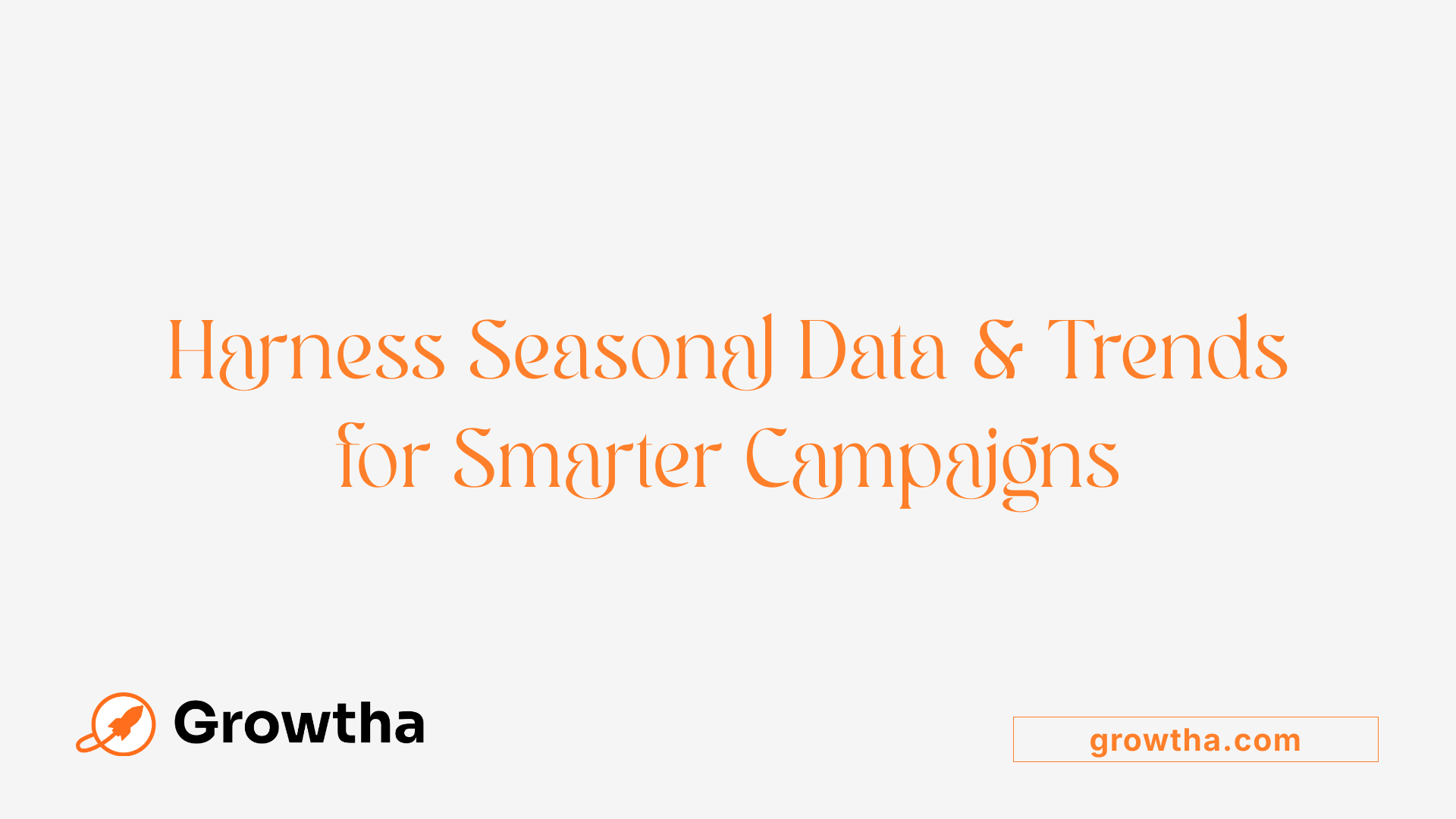
How can data insights and analytics improve the effectiveness of seasonal healthcare marketing?
Data insights and analytics play a vital role in enhancing the success of seasonal healthcare marketing strategies. By analyzing patterns in patient behavior, search trends, and healthcare claims during specific times of the year, organizations can identify when certain services or health concerns peak.
Advanced data techniques, including segmentation and predictive analytics, enable targeted messaging that resonates with specific demographics. For example, marketing efforts for flu shots can be intensified just before the winter spike, while campaigns for allergy treatments can be ramped up during spring.
Digital tools like Google Trends, Semrush, and Ahrefs provide real-time insights into what health-related topics are trending. These platforms help pinpoint the timing and nature of content that will be most relevant and engaging. As a result, healthcare marketers can optimize their campaign timing, channels, and content for maximum impact.
Resource allocation becomes more precise with data-driven insights. Marketing budgets can be shifted toward peaks in demand, ensuring higher response rates and better ROI. Additionally, personalization becomes feasible, allowing campaigns to adapt based on patients’ online behaviors and preferences.
Compliance with privacy regulations such as HIPAA remains a priority. Therefore, implementing analytics should always respect patient confidentiality while delivering meaningful insights.
Ultimately, transforming raw data into actionable knowledge allows healthcare providers to create timely, relevant, and empathetic campaigns. These efforts not only increase patient engagement during seasonal peaks but also foster trust and satisfaction, essential for long-term success.
Use of seasonal healthcare patterns like flu season or back-to-school periods
Recognizing recurring seasonal patterns, such as flu season in fall/winter or back-to-school physicals in late summer, helps healthcare providers plan ahead. Campaigns can be synchronized with predictable spikes in patient interest, maximizing outreach efforts.
Analyzing healthcare claims data and search trends to identify high-demand periods
By examining healthcare claims like those from PurpleLab’s extensive database of 5.5 billion claims, marketers can uncover regular upticks in specific procedures—such as eczema prescriptions in late winter or orthopedic surgeries at year-end. Watching search trends also reveals when potential patients start seeking information about symptoms or treatments.
Utilizing tools such as Google Trends, Semrush, and Ahrefs
These platforms enable healthcare marketers to stay ahead of seasonal shifts. Google Trends, for example, can show when searches for ‘flu symptoms’ or ‘allergy relief’ spike, guiding the timing of targeted campaigns. Semrush and Ahrefs assist in keyword research, content planning, and competitive analysis, ensuring content remains relevant during high-interest periods.
| Tool | Primary Use | Benefits | Additional Notes |
|---|---|---|---|
| Google Trends | Tracking seasonal search interest | Identifying peak interest times for health topics | Useful for real-time campaign adjustments |
| Semrush | Keyword research and SEO analysis | Finding seasonal keywords and content gaps | Supports content optimization |
| Ahrefs | Backlink and content analysis | Evaluating content performance and competitive landscape | Enhances visibility of seasonal content |
Improving campaign relevance through data-driven planning
By integrating these analytics, healthcare organizations can craft messages that are both timely and tailored. For example, promoting telehealth services via social media in winter can offset declines in in-person visits.
Updating existing content with seasonal keywords and optimizing for local search ensures higher visibility when search volume is high. Moreover, tracking performance metrics like engagement and conversions guides ongoing improvements.
Incorporating these insights into a unified content strategy ensures that campaigns are more effective at engaging patients during their peak health concern periods, ultimately leading to better health outcomes and increased trust.
Timing Campaigns with Patient Behaviors and Health Seasons
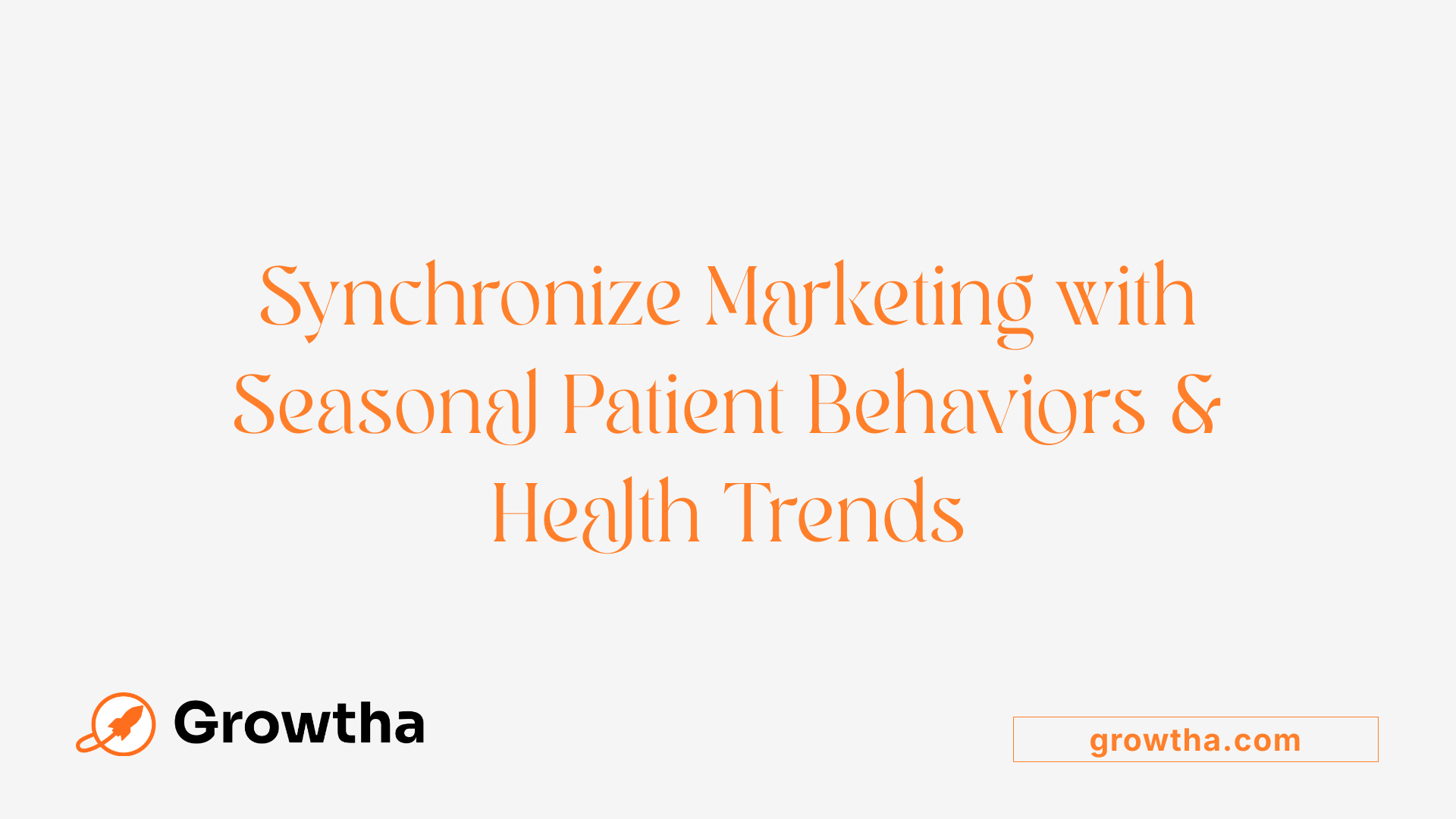
How can healthcare organizations align their marketing efforts with seasonal health trends?
Healthcare marketing strategies are most effective when they align with predictable seasonal health patterns. For instance, promoting flu vaccinations intensifies in the fall and winter months when flu activity peaks, while allergy treatments gain prominence during spring allergy seasons. Summer often sees an increase in immunizations and camp physicals, making it an ideal time for targeted campaigns.
Implementing a seasonal content calendar helps organizations prepare and schedule their campaigns ahead of time. Utilizing weather data and health trend analytics enables providers to anticipate disease outbreaks or health concerns, such as respiratory illnesses or allergy flare-ups, and tailor messaging accordingly.
Visuals, storytelling, and timely promotions, like discounts on vaccines or wellness checkups, deepen patient engagement. Limited-time offers during seasonal peaks can also motivate action. These approaches not only improve service uptake but also position healthcare providers as responsive and attentive to patient needs throughout the year.
How should digital marketing tools like social media, SEO, and online advertising be integrated during seasonal healthcare campaigns?
Digital channels are vital components of seasonal campaign strategies. Social media platforms such as Facebook, Instagram, TikTok, and LinkedIn offer targeted reach through geofencing and demographic-specific advertising. For example, promoting flu shot clinics with local hashtags and timely posts can generate interest locally.
Search engine optimization (SEO) enhances online visibility by incorporating seasonal keywords like 'spring allergy relief' or 'winter flu vaccine.' Paid advertising campaigns, such as Google Ads, should be optimized for these keywords to reach high-intent audiences during their peak search periods.
Email marketing remains essential for personalized messaging. Regular newsletters that highlight seasonal health tips and reminders can nurture patient relationships. Creating relevant, engaging content—like blogs or videos—can be amplified through social sharing and backlinks, increasing campaign reach.
Overall, these tools should work synergistically: SEO attracts organic traffic, social media fosters engagement, and paid ads target specific audiences, all timed to coincide with seasonal health concerns for maximum impact.
What factors are crucial when planning health awareness campaigns around seasonal concerns?
Effective planning begins with identifying the right timing. Researching current health trends and analyzing consumer search behavior with tools like Google Trends or Elevate Trends helps pinpoint when patients are seeking specific health information.
Developing themed campaigns—such as 'Fall Flu Prevention' or 'Spring Allergy Relief'—helps target the relevant audience at the appropriate time. Designing content that includes seasonal keywords and hashtags improves search visibility.
Tailoring message content is essential; for example, emphasizing the importance of early vaccination or screening during the right season boosts relevance. Ensuring the campaign's digital assets—websites, landing pages, and email templates—are optimized for mobile devices and user experience enhances engagement.
Finally, ongoing performance tracking allows health marketers to adjust their strategies. Monitoring metrics like click-through rates, conversions, and social engagement ensures campaigns remain effective and aligned with seasonal health priorities.
What are some best practices for continuously optimizing healthcare marketing campaigns throughout the year?
Continuous optimization involves dynamic adjustment based on real-time data. Regularly reviewing analytics from social media, SEO performance, and advertising campaigns helps identify what resonates with audiences.
Scheduling content in advance but remaining flexible to incorporate trending topics or emerging health concerns ensures relevance. A/B testing different messaging, visuals, and offers reveals what drives patient actions most effectively.
Personalizing content based on patient segments—such as age, location, and past engagement—can improve response rates. Leveraging automation tools for follow-ups, reminders, and retargeting keeps the campaign momentum alive.
Additionally, staying informed about seasonal health developments allows marketers to adapt strategies swiftly. Combining these practices maximizes engagement and return on investment, providing timely health information when patients need it most.
Using SEO and Content Optimization for Peak Relevance
How can healthcare providers optimize their content for seasonal health campaigns?
Healthcare providers can boost the effectiveness of their seasonal health campaigns by tailoring their website content to match the health concerns and interests typical of specific times of the year. This involves conducting keyword research with tools like Google Trends, Semrush, and Ahrefs to pinpoint popular search terms related to seasonal health issues, such as 'flu vaccine clinics in fall' or 'spring allergy relief.'
Developing an editorial calendar that schedules timely blog posts, social media updates, and email campaigns ensures that relevant information reaches patients when they are most receptive. Embedding seasonal keywords into titles, meta descriptions, and throughout the content improves visibility in search engine results. Additionally, incorporating engaging content formats, such as patient success stories, interactive quizzes, or infographics, can enhance patient engagement.
Monitoring performance through metrics like page views, bounce rates, and conversions allows healthcare marketers to refine their approach constantly. This ongoing optimization ensures that the content remains relevant, informative, and compelling during peak demand seasons, ultimately increasing patient inquiries and compliance with recommended health practices.
How can data insights and analytics improve the effectiveness of seasonal healthcare marketing?
Utilizing data insights and analytics plays a critical role in enhancing the success of seasonal healthcare marketing efforts. By analyzing real-time data—from website analytics, social media engagement, search trends, and healthcare claims—organizations can identify when and where patient interest peaks.
Segmentation and predictive analytics enable healthcare providers to target specific demographic groups, such as seniors for flu shots or young adults for allergy treatments, with personalized messaging that resonates with their needs. Heat maps and patient journey analyses reveal optimal channels and timing for campaigns, ensuring messages are delivered when patients are most likely to act.
Moreover, data insights help in reallocating budgets to high-performing channels during critical seasonal periods, maximizing ROI. The ability to track engagement metrics like click-through rates, appointment bookings, and social shares informs continuous improvement of content and strategy.
By transforming raw data into actionable intelligence, healthcare marketers can craft empathetic, relevant, and timely campaigns that not only attract new patients but also build trust and loyalty. Compliance with privacy regulations such as HIPAA and GDPR remains essential during data collection and analysis, ensuring ethical and legal standards.
More Resources for Seasonal SEO Strategies and Content Updates
| Strategy | Description | Tools/Resources |
|---|---|---|
| Keyword Optimization | Use seasonal keywords aligned with health concerns common at specific times of the year | Google Trends, Ahrefs, SEMrush |
| Content Calendar Planning | Schedule timely content to match seasonal trends and health awareness events | Content calendars, Google Calendar |
| Content Refreshing | Update old blog posts and pages with seasonal keywords and new research | CMS tools, SEO plugins |
| Backlink Building | Promote seasonal content via backlinks, social sharing, and partnerships | Outreach tools, social media platforms |
| Performance Monitoring | Track content metrics and adjust strategies accordingly | Google Analytics, Sprout Social |
Understanding Seasonal Search Patterns
Using tools like Elevate Trends and Ahrefs, healthcare marketers can identify when specific search queries peak, such as increased interest in flu vaccines during early fall or allergy medications in spring. This data guides the timing of campaigns, ensuring content is launched just before or at the onset of interest surges.
Final Tips for Effective Seasonal SEO Content
- Begin planning and research several months in advance.
- Incorporate local SEO tactics for hyper-targeted outreach.
- Use diverse content types—articles, videos, infographics—for broader engagement.
- Collaborate with influencers and community organizations to amplify reach.
- Regularly review analytics to refine strategies for subsequent seasons.
By aligning content creation and SEO efforts with these seasonal insights and data-driven tactics, healthcare providers can significantly enhance their relevance, visibility, and patient engagement during peak health awareness periods.
Aligning Content with Seasonal Branding and Awareness Campaigns
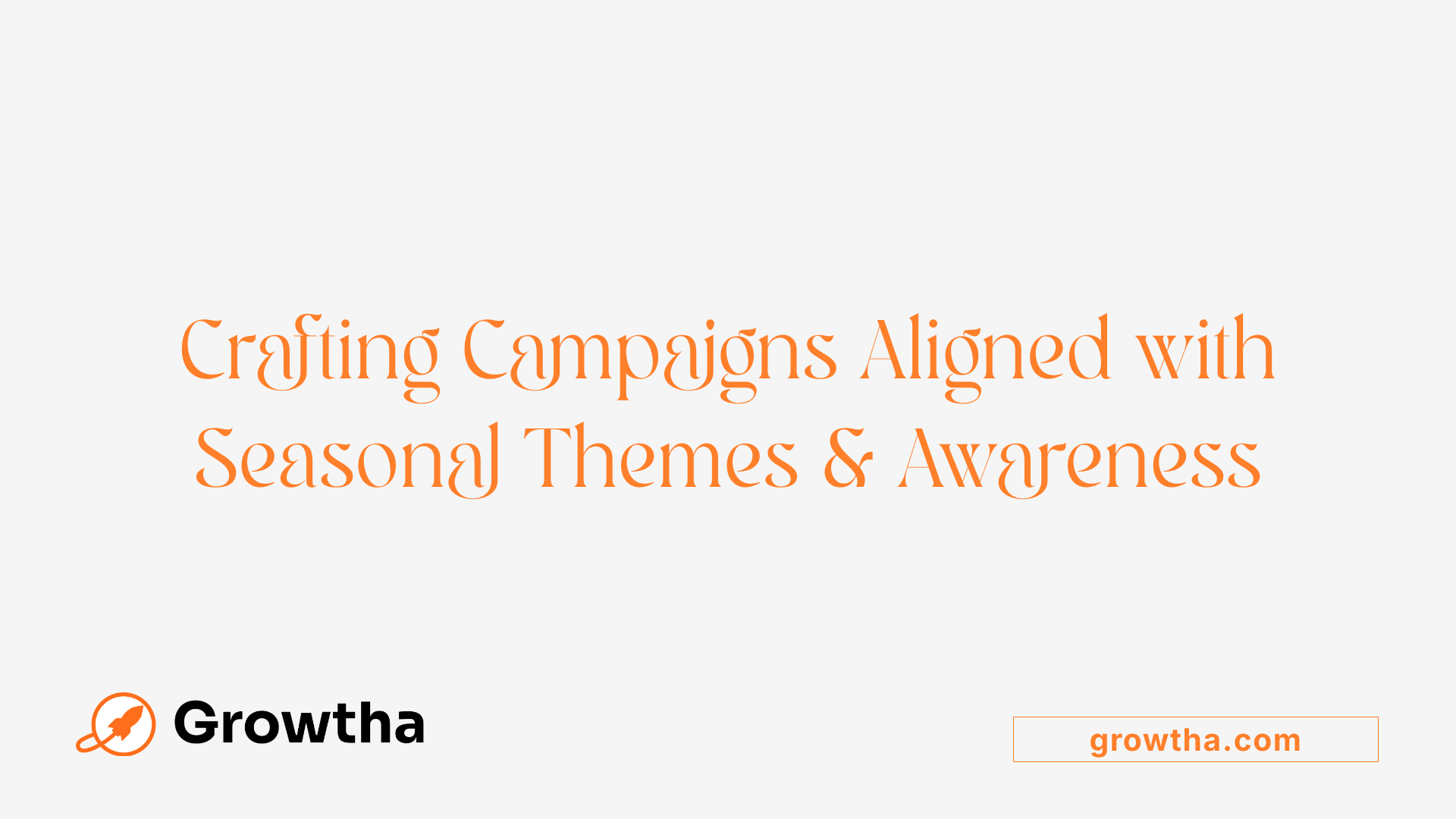
What are best practices for tailoring healthcare content to specific seasons or health awareness periods?
Creating effective healthcare marketing content that aligns with seasonal trends and awareness months requires strategic planning and informed execution. The process begins with understanding the health issues most relevant during each season. For example, spring is ideal for allergy awareness and management, while winter emphasizes flu prevention and respiratory health.
Healthcare providers should tailor their messaging to highlight seasonal risks and preventive strategies. In spring, content might focus on allergy relief tips, outdoor activity safety, and allergy medication options. During winter, the focus shifts to promoting flu shots, hand hygiene, and managing respiratory illnesses.
Utilizing diverse digital channels amplifies the impact of seasonal campaigns. Email newsletters, social media posts, geo-targeted ads, and website banners tailored to the timing of these awareness periods ensure timely and relevant outreach.
Incorporating seasonal visuals, themed hashtags, and thematic messaging enhances content appeal and engagement. For example, using images of blooming flowers and outdoor activities in spring or snow and festive scenes in winter captures attention and reinforces the campaign’s seasonal relevance.
Specific strategies include promoting health tips that resonate with current consumer behaviors, such as encouraging outdoor exercise in summer or emphasizing immune support in fall. Sharing data-driven insights, personalized health goals, and culturally sensitive messages strengthens patient trust and relevance.
Telehealth services and remote health monitoring can be seamlessly integrated into seasonal campaigns, allowing patients to access care and guidance conveniently during peak health periods. This proactive approach not only supports preventive health but also fosters ongoing patient engagement.
Overall, aligning content with seasonal health observances enhances the credibility, relevance, and reach of healthcare marketing efforts, increasing patient awareness, engagement, and compliance with health recommendations.
Promoting health observances like Men’s Health Month in June
June is designated as Men’s Health Month, emphasizing the importance of preventive health screenings, sexual health education, and awareness of conditions like high blood pressure and cholesterol. Campaigns during this month often feature messaging about routine checkups, encouraging men to prioritize their health.
Effective strategies include hosting community events, launching targeted social media campaigns featuring testimonials and success stories, and utilizing email blasts to remind men of the importance of proactive health management. Special promotions for screenings, free health assessments, or health webinars are also beneficial.
Using seasonal visuals, hashtags, and themes in content creation
Visuals are powerful tools to evoke seasonal relevance and improve engagement. Bright colors, themed graphics, and images that depict seasonal activities can make content more appealing.
Hashtags like #MenHealthMonth, #AllergyAwareness, #FluPrevention, and seasonal tags such as #SummerHealthTips or #WinterWellness help organize campaigns and boost discoverability on social media. Combining visuals and hashtags creates cohesive campaigns that resonate with audiences.
Creating campaigns around national health observances and awareness months
Aligning campaigns with designated observances ensures timely relevance and greater awareness. For example, in October, breast cancer screening promotions and pink-themed content foster awareness.
Planning content around these observances includes educational blog posts, infographics, patient stories, and promotional offers. Partnering with influencers or community organizations amplifies reach.
In summary, effective seasonal healthcare marketing hinges on understanding timing, tailoring messaging, and utilizing visual and thematic elements that resonate with specific health observances. This targeted approach increases engagement, builds trust, and ultimately promotes healthier behaviors across diverse patient populations.
Enhancing Campaign Reach with Content Marketing and Digital Tools
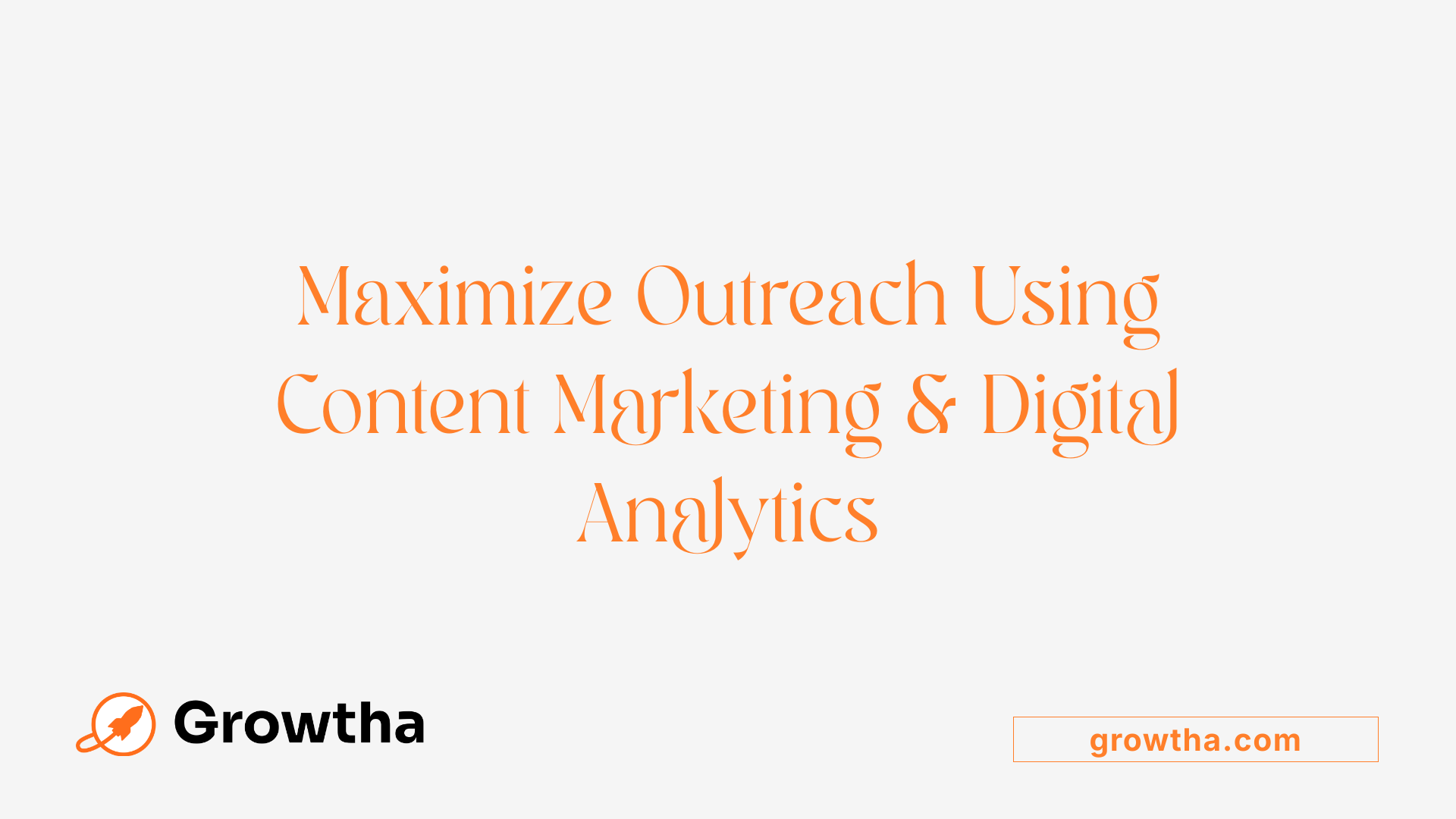
How can healthcare providers create a strategic content calendar for seasonal themes?
A well-planned content calendar is vital for aligning healthcare marketing efforts with seasonal health needs. Start by identifying key health observances, seasonal threats, and patient interests throughout the year. For example, in fall, focus on flu vaccinations, while spring might highlight allergy management.
Map out content types such as blog posts, social media updates, videos, and email campaigns that correspond with these themes. Incorporate visuals and messaging that resonate with each season, emphasizing timely advice and preventive measures.
Using digital tools like Google Trends, SEMrush, and Ahrefs can help discover trending topics and search patterns related to seasonal health issues. Regularly review performance data to adjust the calendar and optimize future content.
A strategic calendar not only helps in timely content delivery but also ensures consistent messaging that keeps your audience engaged year-round.
How can social media, blogs, and email marketing be used to amplify messages?
To maximize reach, healthcare organizations should leverage multiple digital channels. Social media platforms like Facebook, Instagram, TikTok, and LinkedIn allow targeted messaging, community engagement, and real-time interaction.
Share informative blog posts that provide in-depth insights on seasonal health topics. Repurpose blog content into smaller social media snippets, infographics, and videos to broaden visibility.
Email marketing remains a powerful tool for personalized messaging. Use segmented lists to send tailored health tips, reminders, and promotion of seasonal services.
Integrating these channels creates a cohesive campaign where each platform amplifies the others, increasing overall engagement. Track metrics such as click-through rate (CTR), engagement percentage, and conversions to refine future campaigns.
How can collaborating with influencers and community partners improve seasonal campaigns?
Partnering with health influencers, local community organizations, and patient advocacy groups can significantly extend the reach of seasonal health campaigns. Influencers who align with your healthcare focus can authentically promote preventive measures and educational content to their followers.
Community partners can help spread awareness through local events, webinars, and outreach programs, especially in underserved areas. These collaborations lend credibility and increase trust among diverse populations.
Joint initiatives might include health fairs, educational webinars, or shared social media campaigns. Ensure content remains compliant with healthcare regulations and HIPAA standards while maintaining transparency.
By working with influential voices and community representatives, healthcare providers can foster a sense of trust, encourage participation, and ultimately improve health outcomes during critical seasonal periods.
| Strategy | Action Items | Expected Outcomes |
|---|---|---|
| Calendar Planning | Identify seasonal themes, plan content types, schedule posts | Timely, coordinated campaigns that boost engagement and relevance |
| Multi-Channel Amplification | Share content via social media, blogs, emails, and collaborations | Broader reach, increased patient interaction |
| Influencer & Community Partnerships | Partner with influencers and organizations for wider awareness | Enhanced credibility, trust, and community involvement |
By integrating these strategic approaches, healthcare marketers can effectively amplify their seasonal messaging, improve engagement, and foster stronger connections with their target audiences.
Bringing It All Together: A Holistic Approach to Seasonal Content Optimization
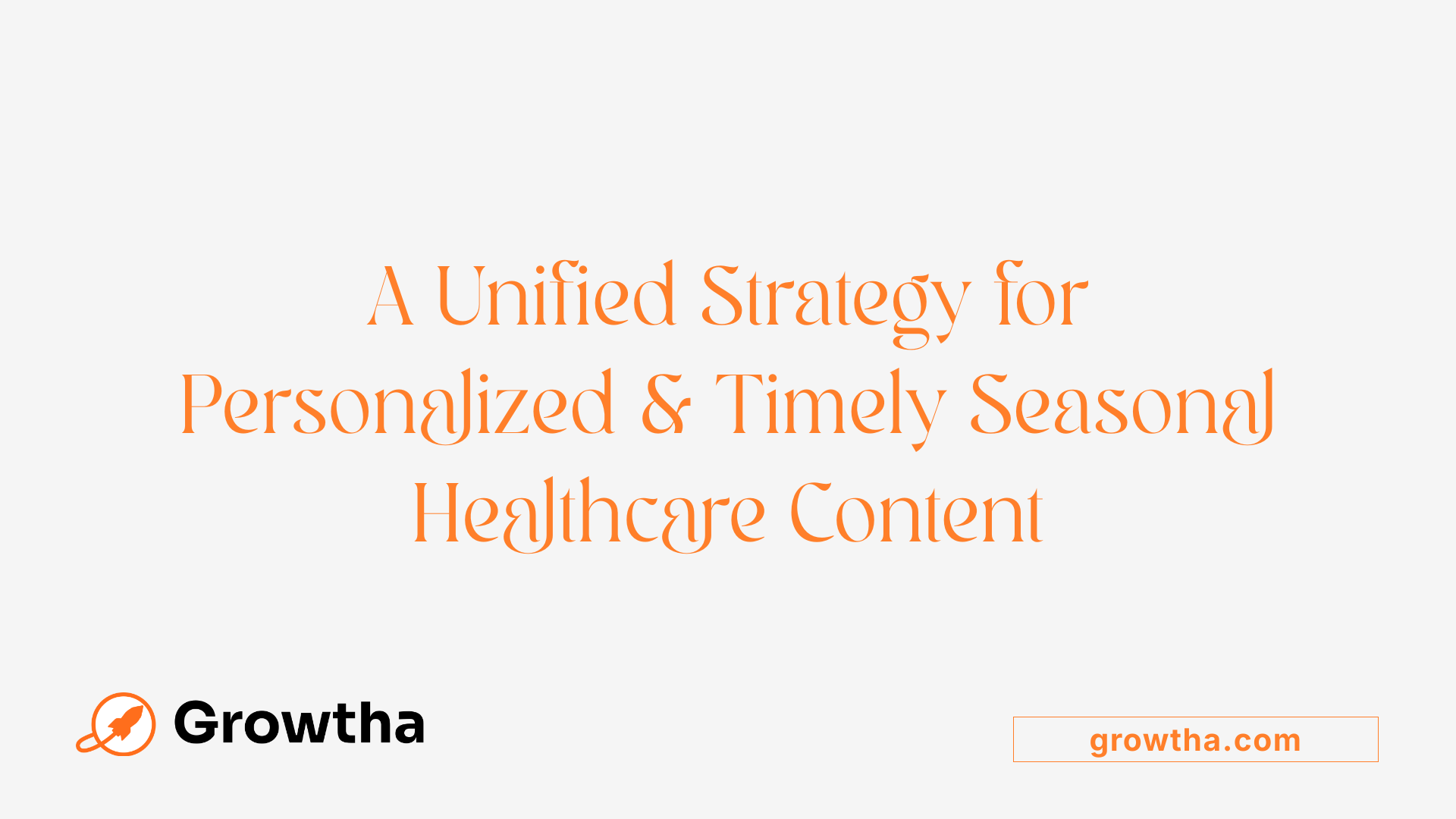
How can healthcare providers deliver personalized and timely messages for seasonal health promotion and patient outreach?
To effectively reach patients during specific seasons, healthcare providers need to focus on personalization and timing. This involves leveraging detailed patient data, such as medical history, demographics, and behavior patterns, to craft relevant and targeted messages. When messaging aligns with patients’ actual needs or upcoming seasonal risks, engagement naturally increases.
Advanced data analytics tools and segmentation strategies help providers identify distinct patient groups. For example, older adults might receive reminders for flu shots in fall, while parents of young children are targeted for back-to-school physicals in late summer.
Timing is equally essential. Using multiple digital channels—like email, SMS, health apps, social media, and messaging platforms—ensures that messages are delivered when patients are most receptive. During flu season, timely reminders about vaccination clinics or telehealth consultations can significantly improve participation.
Automation plays a vital role in maintaining consistency. Automated systems can schedule reminders, follow-ups, and educational content based on seasonal trends and individual patient timelines. This proactive approach enhances awareness and encourages preventive care.
In summary, integrating data-driven insights with multi-channel communication strategies allows healthcare providers to send personalized, timely messages that resonate with patients, ultimately boosting engagement and improving health outcomes during crucial seasonal periods.
Driving Results with Strategic Seasonal Content
In conclusion, the success of seasonal healthcare campaigns depends heavily on strategic planning and execution. By leveraging data insights for timing, optimizing content with seasonal keywords, and using digital tools to expand reach, healthcare providers can significantly improve patient engagement and health outcomes. Tailoring content to align with seasonal health concerns and awareness periods fosters trust, relevance, and authority in health communications. Employing a holistic approach that integrates advanced analytics, personalized messaging, and multichannel distribution ensures that campaigns resonate with target audiences at the right moment. As healthcare marketing continues to evolve, staying responsive to seasonal trends and patient behaviors will remain crucial for achieving impactful and sustainable results.
References
- Seasonal Healthcare Marketing: 4 Key Ways Timing Boosts Success
- Timing is Everything: Aligning Healthcare Marketing with Seasonal ...
- How to Optimise Health and Wellness Content for Seasonal SEO
- Healthcare Content Strategy 2025: Key Steps to Success
- How Deerfield Optimized Healthcare Advertising Campaigns Using ...
- Optimizing Your Marketing Campaign: How to Strategize Your Blog ...
- June Healthcare Marketing Campaign Suggestions - Cured Health
- An Expert's Guide to Healthcare Marketing on Social Media - Big Sea







